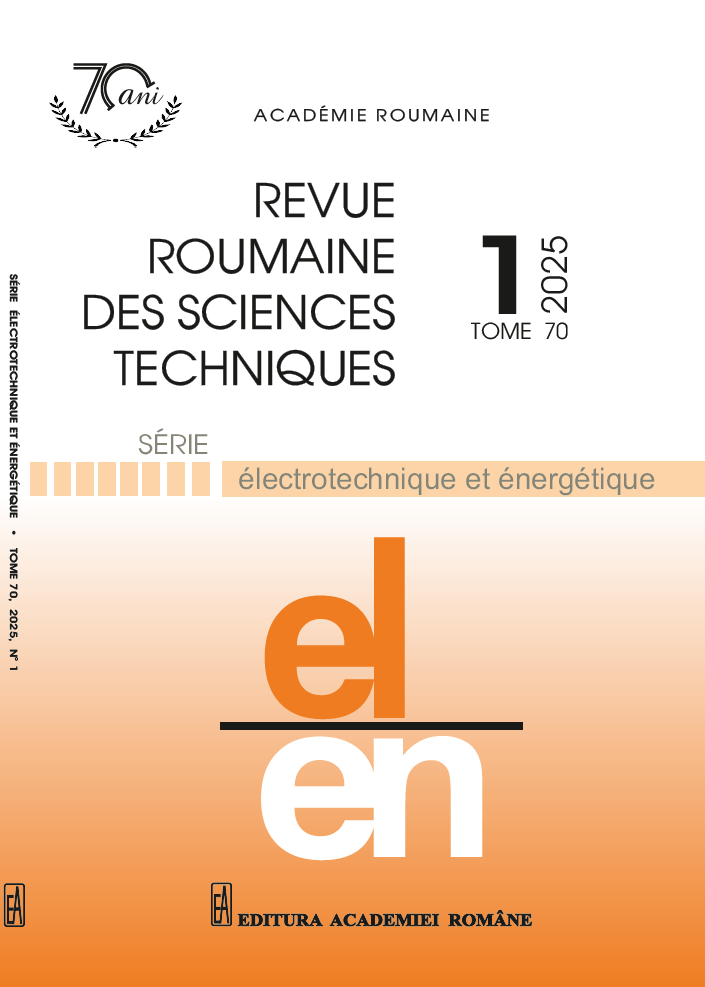DESIGN AND IMPLEMENTATION OF A COST-EFFECTIVE, FUNCTIONAL ELECTRICAL STIMULATION DEVICE FOR FOOT DROP REHABILITATION
DOI:
https://doi.org/10.59277/RRST-EE.2025.1.26Keywords:
Functional electrical stimulation, Foot drop, Ankle-foot orthoses (AFO), Arduino NanoAbstract
Functional electrical stimulation (FES) is an effective method for correcting foot drop and facilitating forefoot elevation during walking. As a subset of neuromuscular electrical stimulation (NMES), FES enhances functional movements by stimulating muscles to compensate for neurological deficits. Recent technological advancements focus on developing more compact, efficient, and customizable devices that cater to individual patient needs, improving rehabilitation outcomes. This study developed a hybrid device combining electrical stimulation with ankle-foot orthoses (AFO) to enhance gait rehabilitation. A customized stimulation unit with adjustable parameters was created to deliver electrical impulses. An Arduino nano microcontroller was programmed to process data from an MPU6050 sensor, which measures accelerations and ankle angles (plantar flexion and dorsiflexion). This setup allows for precise control of stimulation patterns, offering a cost-effective and adaptable solution for patients with foot drop, aligning with current scientific efforts to enhance gait rehabilitation technologies.
References
(1) R.M. Baerov, A.M. Morega, M. Morega, Analysis of magnetotherapy effects for post-traumatic recovery of limb fractures, Rev. Roum. Sci. Techn. – Électrotechn. et Énerg., 65, 1-2, pp. 145–150 (2020).
(2) T. Aout, M. Begon, B. Jegou, N. Peyrot, T. Caderby, Effects of functional electrical stimulation on gait characteristics in healthy individuals: A systematic review, Sensors, 23, pp. 8684 (2023).
(3) L. Hodgins, C.T. Freeman, A hybrid orthosis combining functional electrical stimulation and soft robotics for improved assistance of drop-foot, Med. Eng. Phys., 115, 1, pp. 103979 (2023).
(4) C. Singleton, H. Jones, L. Maycock, Functional electrical stimulation (FES) for children and young people with cerebral palsy, Paediatr. Child Heal. (United Kingdom), 29, 11, pp. 498–502 92019).
(5) D. Scherb, P. Steck, H. Völkl, S. Wartzack, J. Miehling, A new method for passive ankle foot orthosis design – integration of musculoskeletal and finite element simulation, Proceedings of the Design Society, 34, 3, pp. 333-342, 2023.
(6) K.A. Shorter, G.F. Kogler, E. Loth, W.K. Durfee, E.T. Hsiao-Wecksler, A portable powered ankle-foot orthosis for rehabilitation, J. Rehabil. Res. Dev., 48, 4, pp. 459–472 (2011).
(7) ***In-Depth: Interface MPU6050 Accelerometer & Gyroscope Sensor with Arduino. https://lastminuteengineers.com/mpu6050-accel-gyro-arduino-tutorial/.
(8) S. Qu, R. Li, W. Yao, C. Ma, Z. Guo, structure design, kinematics analysis, and effect evaluation of a novel ankle rehabilitation robot, Appl. Sci., 13, 10, pp. 6109 (2023).
(9) T. Seel, C. Werner, T. Schauer, The adaptive drop foot stimulator – Multivariable learning control of foot pitch and roll motion in paretic gait, Med. Eng. Phys., 38, 11, pp. 1205–1213 (2016).
Downloads
Published
Issue
Section
License
Copyright (c) 2025 REVUE ROUMAINE DES SCIENCES TECHNIQUES — SÉRIE ÉLECTROTECHNIQUE ET ÉNERGÉTIQUE

This work is licensed under a Creative Commons Attribution-NonCommercial-NoDerivatives 4.0 International License.


